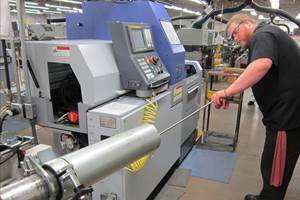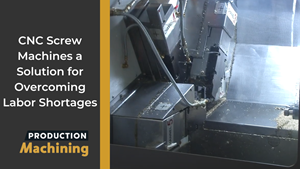Collaborative Addresses the Skills Gap
Education and workforce development are the bedrock of 21st century manufacturing.
Education and workforce development are the bedrock of 21st century manufacturing. In the United States, this concept must be well understood in order to drive commitment by policy makers, the industry and educators to educate current and future workers so they may lead the pace of global advanced manufacturing and technology innovation.
“Manufacturing” has become a combination of technologies that are defined by a high level of innovation and collaboration. Automation has become a dominant force within the manufacturing environment and workers will need to understand how to manage sophisticated robots and other automated technologies that are built upon information technology and advanced software. In addition, advanced manufacturing is the dominant type of manufacturing in the U.S. because it is driven by economics, competition and national security.
Innovative and new approaches in workforce development have been initiated. Now they need to be implemented and institutionalized so the national dialogue about the skills gap may be transformed into building a pipeline of advanced manufacturing talent to support, sustain and drive economic growth.
FANUC America Corp. is doing its part to address the skills gap. Its CERT education group has worked with technology leaders in robotics, automation, advanced manufacturing and the connected enterprise, and educators to develop the Robotics and Advanced Manufacturing Technology and Education Collaborative (Ramtec). The collaborative trains the workforce with a best practices model. The Ramtec model delivers national, portable, competency-based skill certifications, aligned to secondary and post-secondary programs of study and to industry-relevant training needed for employment in advanced manufacturing.
More industry education partnerships, such as Ramtec, need to be put in place to have a significant impact on the future of manufacturing.
The majority (80 percent) of CEOs and manufacturing executives believe the skills gap will impact their ability to implement new technologies, stagnating expansion and growth opportunity.
The problem is getting worse, according to new statistics provided by the Global Robotics Technology Report (2015), which shows that the skills gap is becoming larger. For instance, the report states that the worldwide robotics market is predicted to grow from the 2015 level of $26.9 billion to $82.7 billion in 2020. This 11 percent compounded average growth in the next five years is unprecedented. Given the anticipated growth of the robotics industry—the platform for advanced manufacturing—the number of jobs that will be required to meet that demand will grow exponentially, as well.
And, according to the Manufacturing Institute and Deloitte Consulting, the skills gap is expected to result in 2 million jobs that will go unfilled.
Why has closing the skills gap been so challenging? When new skill requirements for the workforce are identified, they need to be understood in order to teach them. Since the manufacturing sector has been transformed from the baby boomer generation to the millennial generation, the long lag has had an impact on updating the formal education and training process. There is a push for every student to attend a four-year college; when in fact there are more relevant, flexible and less expensive education alternatives.
The stigma associated with manufacturing ignores newly available career opportunities. Today, the average annual salary for a STEM worker is $33,200 more than the average salary of all occupations in the U.S. The general public needs to know about these opportunities for STEM careers and that they are successful career paths.
The rapid pace of technological change makes updating worker skills even more important. Now that industry, government and academia have identified the promise
of advanced manufacturing, they must also work together to ensure that American workers are equipped to fulfill that promise.
Related Content
Job Candidate Questions and What They Tell Us
Individuals who ask thoughtful, original questions in the interview set themselves apart.
Read MoreEmerging Leader's Problem-Solving Skills Cool Down a Hot Project
This 2023 Emerging Leader developed a product in response to a call for help from Yamaha that was a huge hit in the snowmobile industry when it hit the market in 2010. In fact, it is now a common product that most snowmobile OEMs have implemented.
Read More6 Tips for Training on a Swiss-Type Lathe
There are nuances to training a person to effectively operate a Swiss-type lathe. A shop I visited a while back offers some suggestions.
Read MoreVideo Tech Brief: CNC Screw Machines a Solution for Overcoming Labor Shortages
CNC screw machines can exceed job shop productivity and enable manufacturers to overcome perpetual employment gaps.
Read MoreRead Next
Do You Have Single Points of Failure?
Plans need to be in place before a catastrophic event occurs.
Read MoreA Tooling Workshop Worth a Visit
Marubeni Citizen-Cincom’s tooling and accessory workshop offers a chance to learn more about ancillary devices that can boost machining efficiency and capability.
Read More5 Aspects of PMTS I Appreciate
The three-day edition of the 2025 Precision Machining Technology Show kicks off at the start of April. I’ll be there, and here are some reasons why.
Read More





















